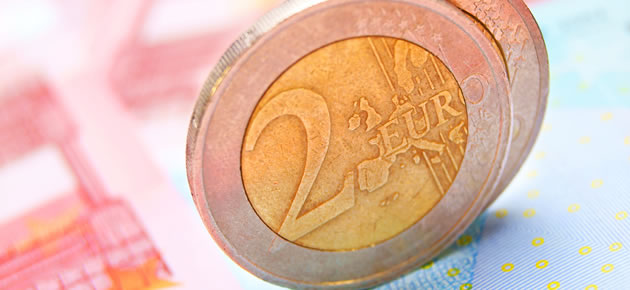Early in European trading the Euro was enjoying a bullish relationship against a pressured Australian Dollar.
The South Pacific asset plummeted against several of its most traded rivals as less-than-impressive domestic data, concerning Chinese news and the Federal Open Market Committee’s decision to taper stimulus by 10 billion Dollars piled on the pressure.
Reports revealed that Australian new home sales fell by 0.4 per cent in December, month-on-month, after advancing by 7.5 per cent in November while the nation’s export price index slipped by 0.5 per cent in the fourth quarter and the import price index fell by 0.6 per cent.
Economists had expected the import price index to gain by 2.0 per cent and the export price index to decline by 0.2 per cent.
Meanwhile, China’s HSBC/Markit Manufacturing PMI for January came in at 49.5, down from 50.5 in December and less than the 49.6 expected.
The measure has now fallen below the 50 mark separating growth from contraction.
The result prompted this response from HSBC economist Hongbin Qu; ‘A soft start to China’s manufacturing sectors in 2014, partly due to weaker new export orders and slower domestic business activities during January. Policy makers should pay attention to downside risks and pre-emptively fine-tune policy to steady the pace of growth if needed’.
The Euro was able to extend gains against the ‘Aussie’ after German unemployment was shown to have fallen by considerably more than expected.
The German unemployment rate fell to 6.8 per cent instead of holding at 6.9 per cent in January as the number of jobless fell by 28,000 – over five times the amount expected.
However, the Euro soon trimmed gains following the release of a mixed bag of confidence reports for the Eurozone.
While consumer confidence came in at -11.7 as predicted, economic confidence came in at 100.9 from a positively revised 100.4 rather than achieving the 101 estimate.
Industrial confidence unexpectedly declined and the currency bloc’s business climate indicator fell from a negatively adjusted 0.20 to 0.19 rather than rising to 0.35.
The common currency consequently put in a patchy performance against its major rivals, dipping against the US Dollar and struggling against a fluctuating Pound.
With German inflation figures still to be published, we forecast further EUR/AUD volatility.
German consumer prices are expected to have fallen by 0.4 per cent in January, month-on-month, producing an annual price increase of 1.5 per cent.
Before the weekend Australian private sector credit figures and German retail sales data could be responsible for additional EUR/AUD movement.
Euro (EUR) Exchange Rates
[table width=”100%” colwidth=”50|50|50|50|50″ colalign=”left|left|left|left|left”]
Currency, ,Currency,Rate ,
Euro, ,US Dollar,1.3596,
,US Dollar,1.3596,
Euro, ,British Pound,0.8261,
,British Pound,0.8261,
Euro, ,Australian Dollar,1.5557,
,Australian Dollar,1.5557,
Euro, ,New Zealand Dollar,1.6712,
,New Zealand Dollar,1.6712,
Euro, ,Canadian Dollar,1.5222,
,Canadian Dollar,1.5222,
[/table]



